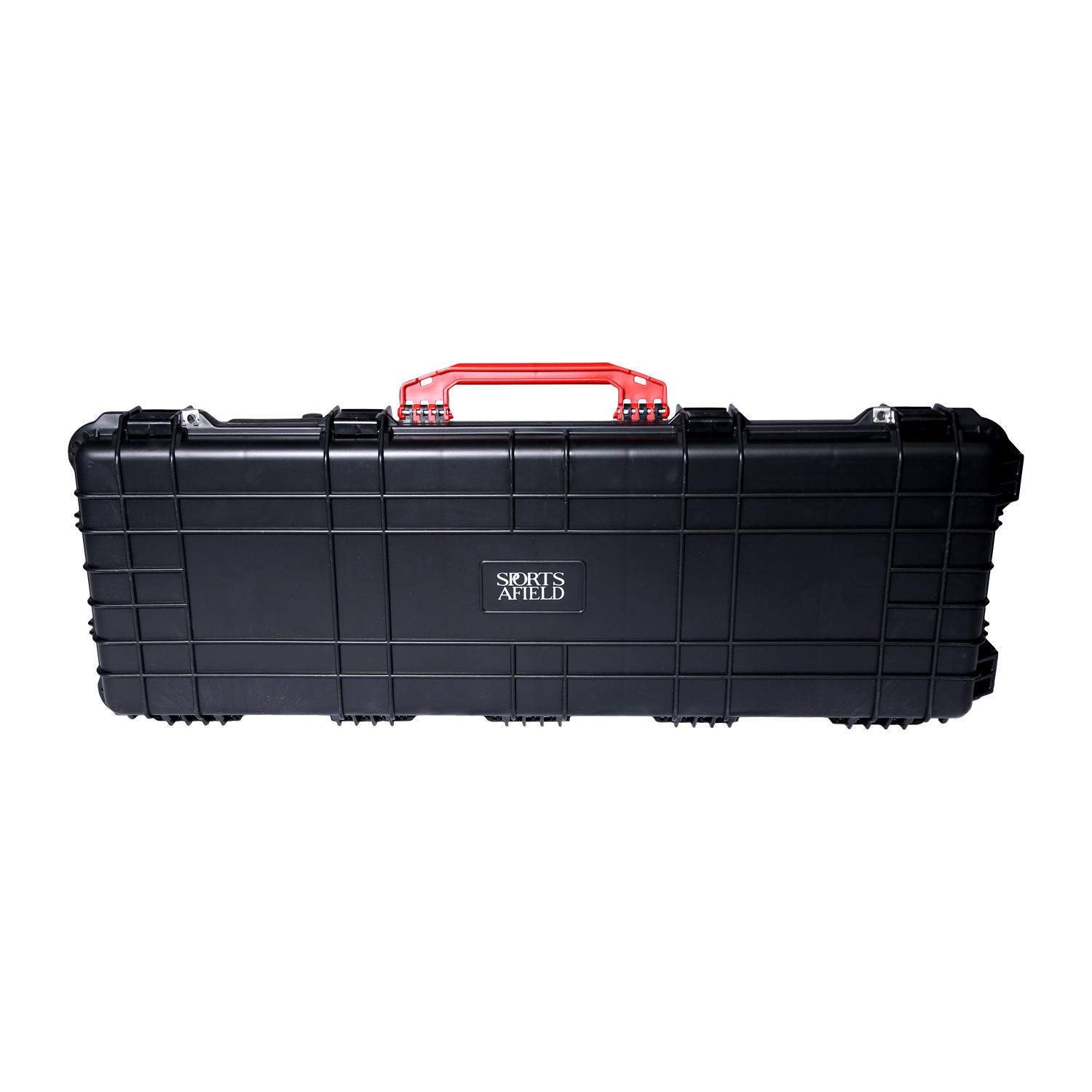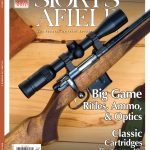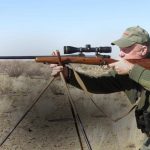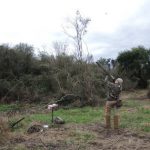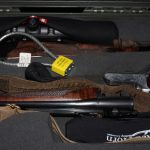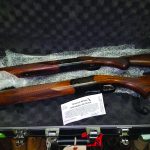An overview of the TSA rules for flying with your hunting firearms, ammunition, and other hunting equipment
They took my Swiss Army knife. They took my mini screwdriver repair kit. They even took my tweezers once. But they haven’t taken my guns yet, and if I pay attention and follow the rules, they hopefully never will.
The Transportation Security Administration is the federal government agency created to ensure traveler safety and prevent terrorism within the public transportation system. TSA agents are best known and most visible as the screeners at airports, scanning your carry-on luggage, asking you to remove your shoes and belt, confiscating your Leatherman tool, and passing their magic wands over your spread-eagled body. Less visibly, they X-ray and hand-search your checked baggage at the airport, probing not only the contents but also the container itself for hidden pockets, false walls, and dangerous goods. This is a good thing. Most of us are willing to trade a little hassle and invasion of privacy for increased safety. Those of us who fly with firearms face a bit more hassle than the average Minnesota grandma, yet TSA regulations for hunters remain surprisingly reasonable.
According to the latest rules, legal firearms, ammunition, and firearms parts may be transported on all North American commercial airlines as checked baggage. No firearms parts may be taken aboard any flight in carry-on luggage. This includes magazines, empty brass, and bullets, but it may also include, at the discretion of individual TSA agents, scopes, a loose rear tang sight, a single trigger shoe, even the mushroomed bullet you found while skinning your elk. To be safe and avoid losing your small gun parts, pack it all carefully in your checked luggage.
The following is a summary of key regulatory requirements from the TSA Web site (tsa.gov) for transporting firearms, parts and ammunition. My comments are in parentheses.
All firearms must be declared to the carrier during the ticket counter check-in process. The firearm must be unloaded. (I like to remove the bolt or barrel, too. It reassures ticket agents, earns a modicum of their respect, and expedites the entire process.)
The firearm must be carried in a hard-sided container. (Plastic, metal, or wood. No specifics are given, but most commercially sold, lockable gun cases qualify. Of course, you’ll want a sturdy one that resists crushing, bending, twisting, and easily sprung hinges.)
The container must be locked. (It doesn’t have to be locked prior to check-in, but it’s a good idea just in case it falls into the wrong hands before you check in. You will have to unlock it for the ticketing agent, sign and date a firearms declaration card, and place said card inside the case. The ticket agent may or may not ask to see the firearm–probably not, now that TSA agents visually check them all, but that is up to each airline.)
The passenger must provide the key or combination to the screener if it is necessary to open the container, and then remain present during screening to take back possession of the key after the container is cleared. (The TSA screeners may be near the ticketing counters or downstairs in the baggage area. Your ticketing agent should direct you to them.)
Any ammunition transported must be securely packed in fiber (such as cardboard), wood, or metal boxes or other packaging specifically designed to carry small amounts of ammunition. (This requirement used to state “original factory packaging,” and some screeners or ticketing agents might still insist on this, but they should accept plastic ammo boxes. The main idea is to prevent free rounds from clattering together, potentially setting off a primer, remote though that possibility may be. So stick with factory packaging or any of the plastic boxes with individual sleeves or cavities for each cartridge. Shotgun shells may be stored together in classic factory boxes. I find it best to tape all boxes closed–even fresh, unopened factory shotshell boxes which easily pop open and spill their contents. Clear packing tape works well to seal all flaps and seams.)
Firearm magazines/clips and ammo pouches such as those you wear on your belt do not satisfy the packaging requirement. (Put the rounds in an approved box as above.)
The ammunition may also be located in the same hard-sided case as the firearm, as long as it is properly packed as described above. (Individual airlines might establish more stringent requirements for ammo. Most want it packed in a different case from the firearm. Contact your airline for clarification. To be on the safe side, pack ammo in a lockable, hard-sided case and put it in your second checked bag.)
Black powder and percussion caps used with blackpowder type firearms are not permitted in carry-on or checked baggage. (Arrange to buy such supplies at the termination of your flight or have your outfitter procure them for you ahead of time.)
Bows, arrows, and broadheads or any other pointed tools must be checked. None are allowed as carry-on. (The TSA doesn’t demand a hard bow case, but common sense does. Arrows can be packed with bows. Broadheads should be secured to protect and cover sharp points and edges.)
Chemical repellants (mace, pepper spray, etc.) can be carried in checked luggage if the volume is less than four ounces and has less than a 2 percent active ingredient. (Most bear repellants exceed these limitations. You’re better off buying them in your destination city.)
Hunting knives and tools (I assume they mean various skinning tools, small shovels, pointed sharpening rods, or anything else sharp and pointed) are prohibited as carry-on luggage. These items should be packed in checked luggage. Any sharp objects packed in checked luggage should be sheathed or securely wrapped to prevent injury to baggage handlers and security screeners (who will be digging through your bags, grabbing things.)
These TSA regulations are strictly enforced. Don’t question them or argue about them. Don’t try to circumvent them. If you want your flight to go smoothly, follow them to the letter, and check the TSA Web site for updates, which are posted fairly regularly. Recently cigarette lighters, long verboten in checked bags, were also prohibited as carry-on. Book matches are still legal. Strike-anywhere matches are considered an explosive and can’t be carried anywhere, but tweezers, blunt scissors, nail clippers, nail files, corkscrews, safety razors, and eyeglass repair tools are again legal as carry-ons. Maybe common sense is making a comeback.
